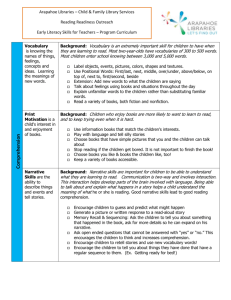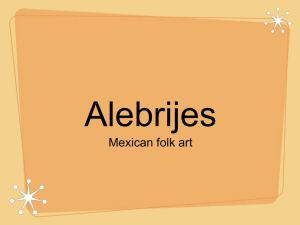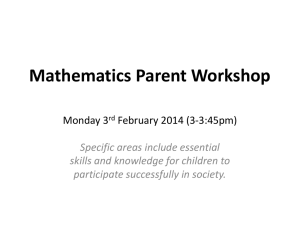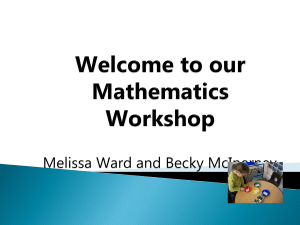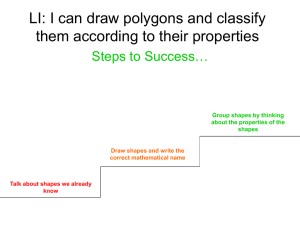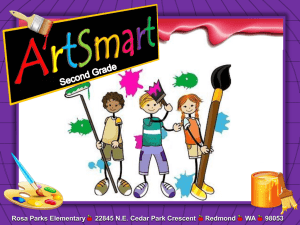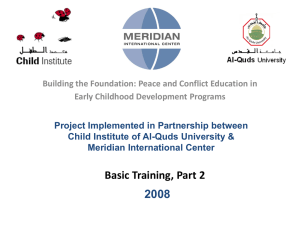PECT PRACTICE
advertisement
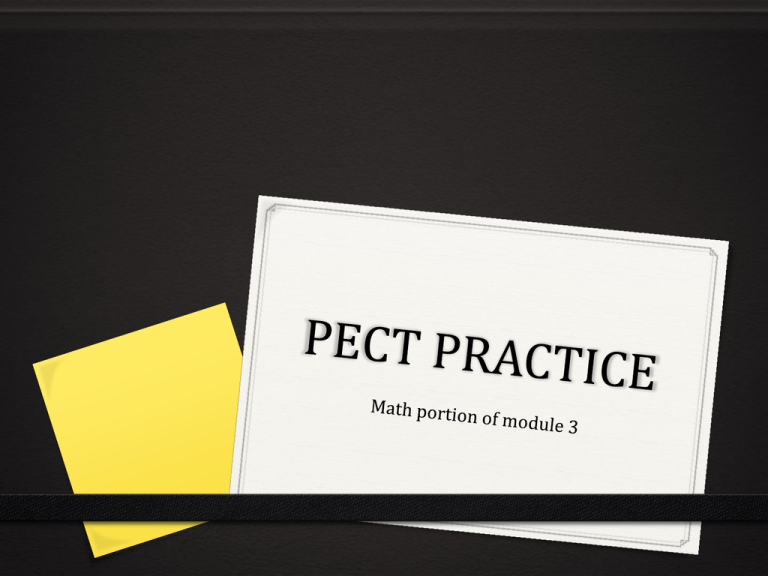
A Venn diagram would be most appropriate for visually representing which of the following problems? A. What are the common multiples of 2, 3, & 5 that are less than 40? B. If 15 students in a class ride the bus to school and 10 do not, how many students are in the class? C. What is the probability that out of 3 flips of a coin, the coin will come up heads every time? D. If 4 students are wearing green shirts & 7 are wearing blue shirts, how many are wearing either a green or blue shirt? To correctly use the ordinal numbers first through fifth with a group of 5 objects placed in a row, a young child must first be able to: A. Recognize & write the numerals one through five. B. Understand that the order of the objects in the group does not does not affect the total number. C. Recognize that the last number counted is the number of objects in the group. D. Understand that the number five is madeup of smaller numbers. A preschool child measures the length of a long rectangular block by lining up several smaller blocks along the length of the longer block. This demonstrates that the child has an understanding of which of the following measurement concepts? A. Conservation B. Unit iteration C. Partitioning D. transitivity Which of the following math activities would be most appropriate for promoting preschool students’ skills in measurement? A. Telling time to the nearest half hour on analog or digital clock. B. Sequencing 3 different events that occur in the daily classroom routine. C. Combining play coins in different ways to equal one dollar. D. Using a ruler to measure the length of an object to the nearest quarter inch. A preschool teacher wants to promote children’s skills related to counting & comparing numbers. Which of the following activities is most appropriate to use for this purpose? A. Asking the children to look around the classroom for the largest numeral they can find. B. Letting the class vote on which book the teacher should read next and then asking the class which book won based on the votes. C. Having the class count the number of times a flipped coin comes up heads & predicting whether or not heads will come up next flip. D. Selecting 1 child each day to count the number of children in the class and set out the appropriate number of cups A 3rd gr. student is having difficulty solving word problems in math. Which of the following strategies would be most helpful for the teacher to suggest first? A. Restating the problem in his or her own words. B. Determining whether there is extraneous information in the problem C. Estimating what might be a reasonable answer to the problem. D. Identifying 2 different strategies that might be helpful in solving the problem. A teacher gives groups of students a number of triangles, squares and semicircles & asks the students to combine these shapes to make as many different figures as they can. This activity will help build a foundation for students’ future development of which of the following skills? A. Generating rules for patterns made of shapes B. Representing shapes on a coordinate grid C. Identifying 3-dimensional geometric shapes D. Determine the area of irregular shapes A preschool teacher uses shapes to create a circlecircle-square, circle-circle-square pattern. The teachers asks which shape should come next to continue the pattern. Some say circle & some say square. Which of the following strategies will best help children construct their understanding of the concept? A. Asking the children to identify the difference between the 2 shapes B. Having the children say the pattern out loud as a group & again asking which shape should be next C. Asking the children to vote on which comes next D. Continue pattern with square then circle & asking which seems best. Based on this work, the best strategy would be to provide instruction in: 59 X13 217 590 707 27 X21 27 640 667 34 X24 166 680 846 A. Addition facts B. Multiplication facts C. Working with carried digits D. When to use zero as a placeholder


